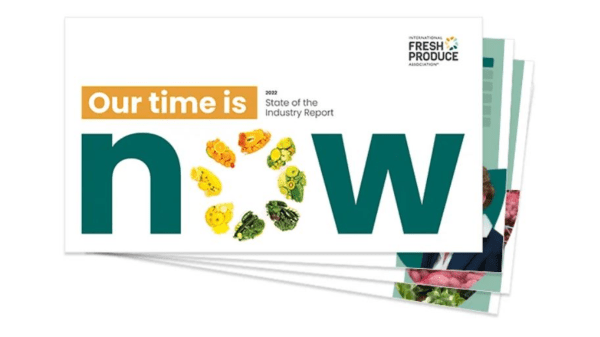The International Fresh Produce Association (IFPA) BB #:378962 has released its first state of the industry report, a document that is worth unpacking. IFPA releases State of the Industry report for 2023 – Produce Blue Book
The most noticeable aspect of the report is that it attempts to be global in focus—a consideration that will be increasingly important for those in the fresh fruit and vegetable industry, no matter where they are.
Why? The report tells us: “Global trade more than doubled between 2000 and 2018, and exports are a driving force behind expansion of the fruit and vegetable sector, according to FAO data.”


IFPA projects modest but real growth for 2023: 3.2 percent for fresh vegetables, 2.9 percent for fresh fruits worldwide.
This is more or less typical of a mature industry (which the produce industry definitely is).
What’s a mature industry? One source gives these characteristics: Mature Industry – Overview, Attributes, and Valuation (corporatefinanceinstitute.com)
1. A mature industry is one with an established market and customer base.
2. Companies in a mature industry do not experience as much growth as one in a growth industry, which affects multiples like the P/E ratio (price/earnings ratio: in this case, the P/E ratio is lower).
3. Companies in a mature industry can be valued using traditional valuation methodologies.
From another source: “The rate of sales expansion is typically equal to the growth rate of the economy.” Industry Life Cycle | Inc.com
Since the World Bank predicts a global growth rate of 3.2 percent in 2023, World Bank slashes 2022 global growth forecast (cnbc.com) the produce industry is right on target for a mature industry.
Healthy diets are another central theme of the report: “3 billion people worldwide are not able to afford a healthy diet.”
Of course, many people around the world aren’t able to afford much of any diet at all. Healthy diets—lots of fruits, vegetable, and fish—have been estimated to cost two or three times as much as one relying on basic carbohydrates—and not everyone even gets those. This is a vexing issue, and if I were a policymaker for a struggling nation, I don’t know how I might handle it.
“What if produce was considered as not just a commodity but a path to prosperity?” the report asks. “Although it only represents about 7-8% of total global production, fresh fruits and vegetables rank as one of the most valuable crops.”
True. Fresh fruits and vegetables can be a lucrative cash crop. But many developing countries face another dilemma: Do we grow these crops to bring in foreign exchange, or do we focus our attention to the huge sector of our population that doesn’t even have a minimally adequate diet?
The points I make are not intended as criticisms of this report, which is comprehensive and valuable.
That it raises so many subsidiary issues speaks well for it, and there is much more to be said.



